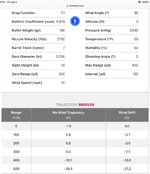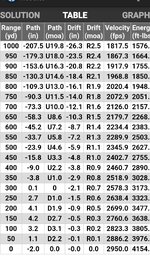NickyD
Lil-Rokslider
Learn your personal abilities and DOPE. If you’re an OK/bad shooter, adding a few inches of error at 300 yards could be a miss. For others it’s meaningless because they shoot a flat trajectory and are very accurate shots.
Focusing too much on dialing cost me an elk last year so I’m practicing my holdovers again. I’m learning to do some simple range estimates in my scope so I can make a quick decision to hold or back off so I can range and dial. Personally, I’m training for a maximum holdover of 200-250 yards, so practically just point and shoot only.
I try to keep things simple, as I tend to lose my mind when I have an animal in the crosshairs lol
Focusing too much on dialing cost me an elk last year so I’m practicing my holdovers again. I’m learning to do some simple range estimates in my scope so I can make a quick decision to hold or back off so I can range and dial. Personally, I’m training for a maximum holdover of 200-250 yards, so practically just point and shoot only.
I try to keep things simple, as I tend to lose my mind when I have an animal in the crosshairs lol



![[Linked Image] [Linked Image]](http://i.imgur.com/kKL0WZC.jpg)